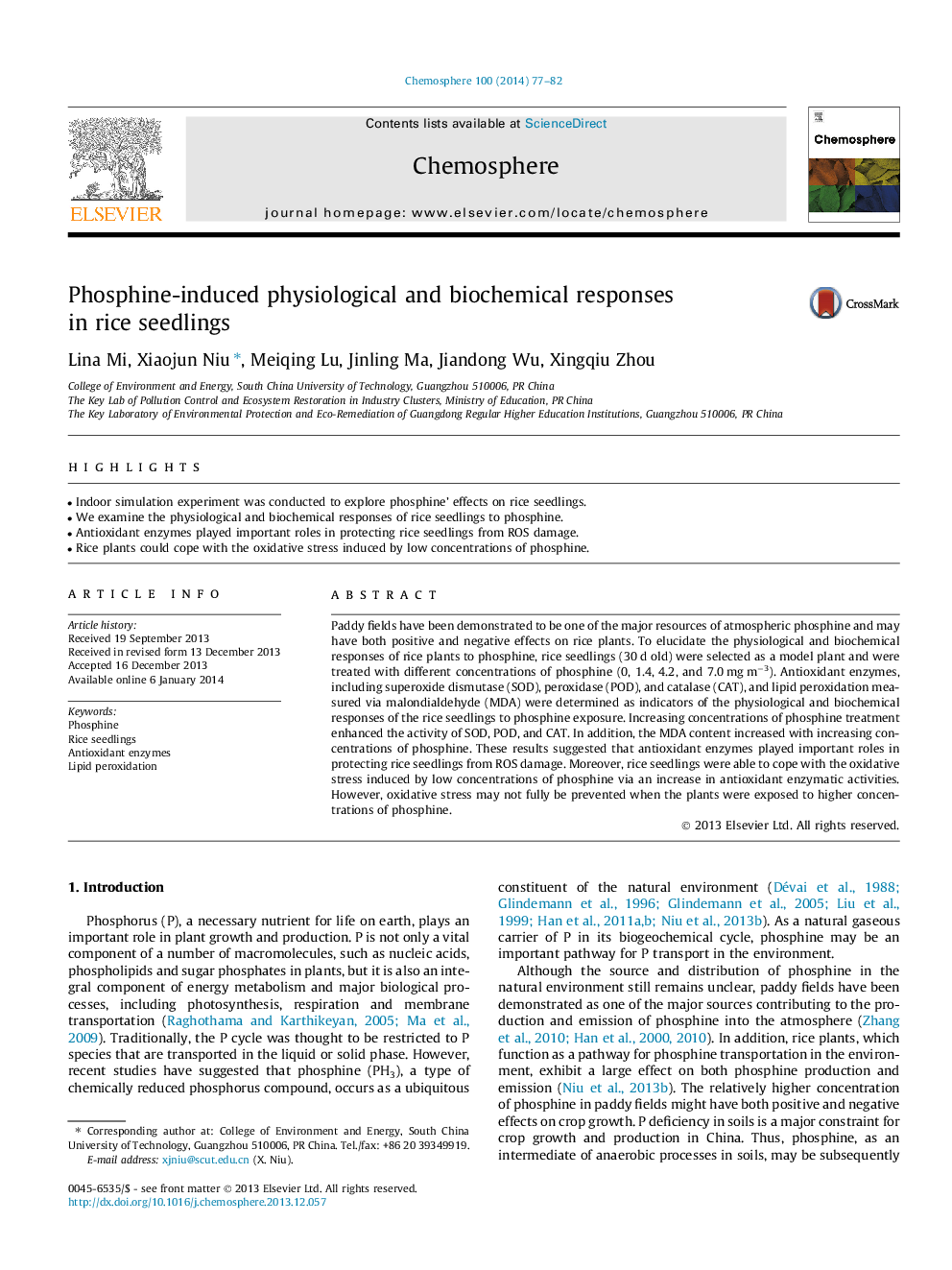| کد مقاله | کد نشریه | سال انتشار | مقاله انگلیسی | نسخه تمام متن |
|---|---|---|---|---|
| 6309458 | 1618871 | 2014 | 6 صفحه PDF | دانلود رایگان |
عنوان انگلیسی مقاله ISI
Phosphine-induced physiological and biochemical responses in rice seedlings
ترجمه فارسی عنوان
پاسخ فیزیولوژیکی و بیوشیمیایی ناشی از فسفین در نهالهای برنج
دانلود مقاله + سفارش ترجمه
دانلود مقاله ISI انگلیسی
رایگان برای ایرانیان
کلمات کلیدی
فسفین، نهال برنج، آنزیم های آنتیاکسیدان، پراکسیداسیون لیپید،
موضوعات مرتبط
علوم زیستی و بیوفناوری
علوم محیط زیست
شیمی زیست محیطی
چکیده انگلیسی
Paddy fields have been demonstrated to be one of the major resources of atmospheric phosphine and may have both positive and negative effects on rice plants. To elucidate the physiological and biochemical responses of rice plants to phosphine, rice seedlings (30 d old) were selected as a model plant and were treated with different concentrations of phosphine (0, 1.4, 4.2, and 7.0 mg mâ3). Antioxidant enzymes, including superoxide dismutase (SOD), peroxidase (POD), and catalase (CAT), and lipid peroxidation measured via malondialdehyde (MDA) were determined as indicators of the physiological and biochemical responses of the rice seedlings to phosphine exposure. Increasing concentrations of phosphine treatment enhanced the activity of SOD, POD, and CAT. In addition, the MDA content increased with increasing concentrations of phosphine. These results suggested that antioxidant enzymes played important roles in protecting rice seedlings from ROS damage. Moreover, rice seedlings were able to cope with the oxidative stress induced by low concentrations of phosphine via an increase in antioxidant enzymatic activities. However, oxidative stress may not fully be prevented when the plants were exposed to higher concentrations of phosphine.
ناشر
Database: Elsevier - ScienceDirect (ساینس دایرکت)
Journal: Chemosphere - Volume 100, April 2014, Pages 77-82
Journal: Chemosphere - Volume 100, April 2014, Pages 77-82
نویسندگان
Lina Mi, Xiaojun Niu, Meiqing Lu, Jinling Ma, Jiandong Wu, Xingqiu Zhou,
